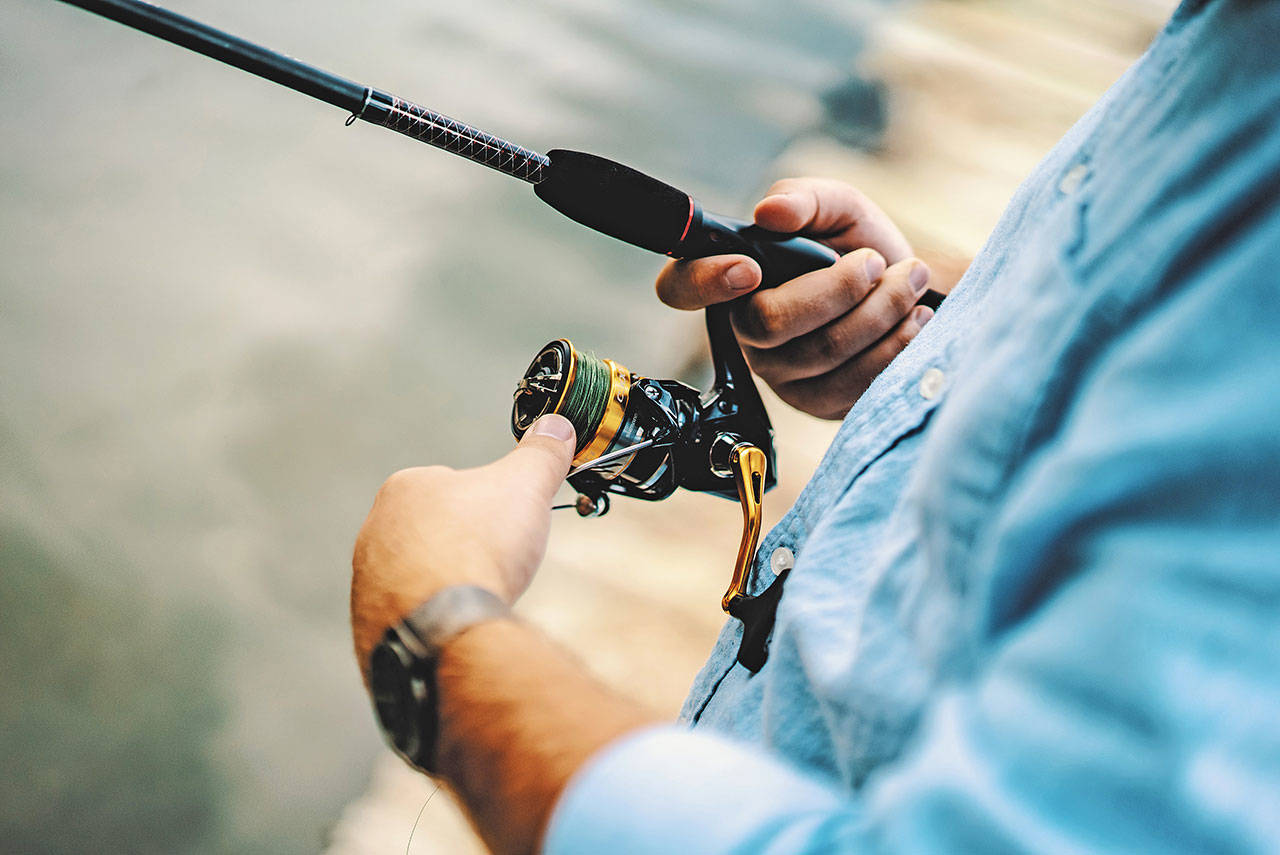HATCHERY STEELHEAD RELEASES will soon begin on the Calawah River as the current wild broodstock program, a faint remnant of the former Snider Creek hatchery program, will move over from the Bogachiel River this spring.
Reasons for the change were listed in a Determination of Nonsignifcance issued by the state Department of Fish and Wildlife — large landslides along the Bogachiel in recent years have impacted efforts to obtain broodstock on that stretch of river and the Calawah, with its lower flows, typically tends to run clearer during the winter months.
Fish and Wildlife also wrote that finding a suitable acclimation site on the Bogachiel has been problematic, while the existing Calawah acclimation site would serve as a suitable release point for steelhead.
The department plans to rear and release 19,000 2019 brood year juvenile steelhead from wild Calawah steelhead adults from the Calawah Acclimation Pond at river mile one.
Release size will be greater than 10 fish per pound in April and May. The wild broodstock will be captured by hook and line or seine fisheries on the Calawah River, primarily by Olympic Peninsula Guide Association members.
Many of these guides have drift boats with live tanks to accommodate these wild fish as they are transferred to Fish and Wildlife planting tanks and eventually on to the Bogachiel Hatchery for holding until ready to spawn.
The department states that “every attempt will be made to live spawn broodstock and return back to the Calawah. All released smolts will be adipose clipped with additional external mark or coded wire tagged. Subsequent years will have a release goal of 35,000 to 50,000 progeny from wild parents.”
More production?
Whether this change to the broodstock program produces more wild steelhead, or breaks even in that regard while adding harvestable hatchery origin steelhead with strong wild backgrounds to mix, remains to be seen.
Hopefully the program is monitored closely by Fish and Wildlife with a full accounting of the number of wild broodstock taken, egg take and the progression from egg to fry to smolt to harvestable hatchery steelhead to know if the program is working better than just leaving everything alone and letting nature take its course.
But at the minimum, barring legal challenges from the anti-angler brigade, this should provide hatchery steelhead fishing opportunity going forward.
Blackmouth bite
The Marine Area 9 (Admiralty Inlet) blackmouth fishery kicked off last Saturday with slight success for anglers fishing off Port Townsend.
Sunday’s sunny weather brought salmon anglers to the water and some even counted fish.
A total of 31 anglers brought in eight chinook in 11 interviews conducted at the Boat Haven ramp and on the Boat Haven docks. Monday’s fishing saw 17 anglers catch three chinook.
Anecdotal reports are typical for this early in the season — i.e. anglers had to wade through a number of too-small blackmouth before finding a keeper.
The Salsbury County Park ramp just across the Hood Canal Bridge in Kitsap County, produced a 0.67 fish/per angler average — three anglers caught two fish. Better to be a small sample size than none at all.
Ridge shines
Could it be two straight weekends with blue sky conditions atop Hurricane Ridge? Super Bowl Sunday last week produced blue skies and a mostly sunny Sunday forecast is in the cards again this weekend.
Just have to slog through a few more days of wet weather.
Avalanche talk
Hurricane Ridge and the Olympic mountain range has an abundance of backcountry to explore, but getting caught in an avalanche is always a concern.
Learn how to be safe while enjoying beautiful scenery with Northwest Avalanche Center Instructor Sam Luthy during a presentation on avalanche safety on Saturday.
The presentation will be held in the Landing Mall, 115 E. Railroad Ave., on the second floor across the hall from Smuggler’s Landing.
The talk is focused on the unaware backcountry traveler and Luthy’s presentation will introduce the concepts of avalanche danger recognition and how to reduce risk, along with where and why avalanches occur, understanding who gets caught in avalanches and why and providing a basic approach to staying safe in the backcountry.
This talk is presented by the Northwest Avalanche Center, Hurricane Ridge Winter Sports Club and the Hurricane Ridge Ski Team. The suggested donation is $10.
Cougar management
Public comments are sought by Fish and Wildlife on proposed recommendations to the cougar management guidelines that set the framework for recreational harvest.
The deparment will accept public comments through Feb. 26 to help finalize hunting rules and regulations proposed for the upcoming year. The proposals are available on the department’s website.
Fish and Wildlife will propose four options related to the cougar harvest guidelines.
The public can watch a video explaining the four options.
Information on how the department currently manages cougars also is available in a video.
Options include maintaining the current harvest guideline, but using a median instead of mean to calculate density. Some options include changing the way the department counts animals toward the guideline.
Other options look at increasing the guideline in areas with historically higher harvest and conflict.
A digital open house about the proposed cougar changes, will be held online Thursday from 5:30 p.m. to 6:30 p.m.
Eric Gardner, wildlife program director and Anis Aoude, game division manager will explain the options in more detail and host a live question and answer session.
The open house can be accessed online here.
________
Sports reporter Michael Carman can be contacted at 360-417-3525 or mcarman@peninsuladailynews.com.

